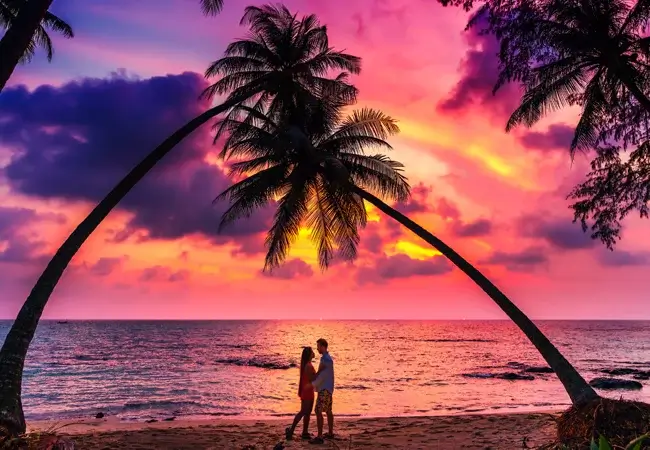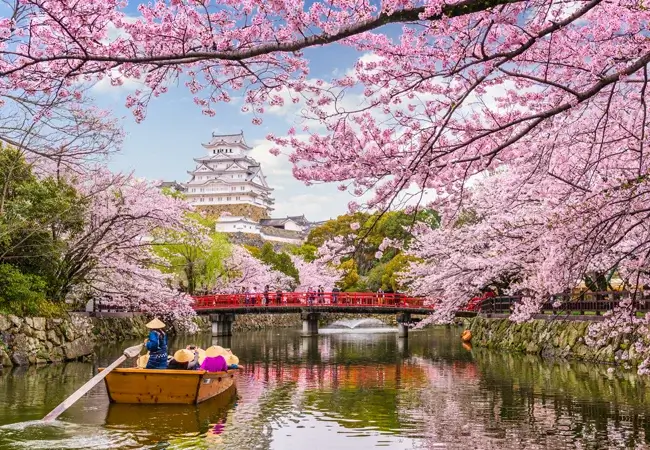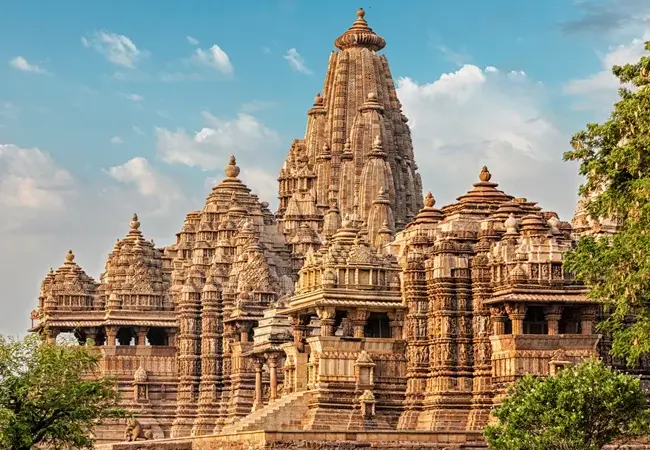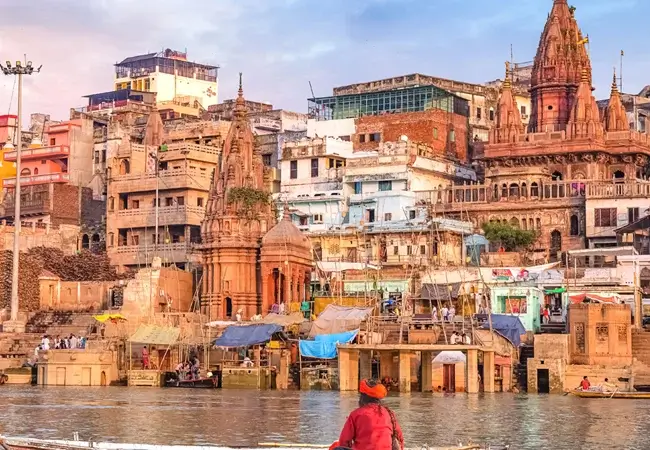Visiting religious places can leave a huge impact on our lives. People mainly visit religious places to increase the spirituality of their souls and to attain inner peace and tranquillity. Once you visit a place having religious importance and learn more and more about those regions, you don’t remain the same person anymore. A little spark of enlightenment tends to touch you and positively transform your soul. If you want to experience something heavenly, then call your travel agent and book your tour package to Vrindavan.
It is a historical city situated in the Mathura district of Uttar Pradesh. People who follow Hinduism believe that Lord Krishna spent most of his childhood days in this city. Thus, tourists get the opportunity to walk through the paths Lord Krishna might have walked. There are approximately 5,500 temples in Vrindavan that are dedicated to Lord Krishna and his divine consort Radha.
Moreover, this place is considered to be very auspicious and significant for the people who follow Vaishnavism because it is an important part of the “Krishna Pilgrimage Circuit” which also comprises Mathura, Barsana, Gokul, Govardhan, Kurukshetra, Dwarka, and Puri. Along with Vrindavan, these places are also equally holy and are known to be the centre of Radha and Krishna worship. Millions of devotees tend to visit Vrindavan every year to be a part of a number of festivals that occur here annually.
It is a temple dedicated to Radha Krishna (Lord Krishna and his divine consort Radha) and Sita Ram (Lord Rama and his consort Sita). The temple of Radha Krishna is present on the first level and Sita Ram on the second level. This temple runs under the supervision of Jagadguru Kripalu Parishat, an international non-profit, educational, and spiritual charitable trust. Spread across an area of approximately 55 acres on the outskirts of Vrindavan, this temple was established by the fifth Original Jagadguru Shri Kripalu Ji Maharaj.
There are 73,000 square feet, pillar-less, dome-shaped Satsang hall being constructed adjacent to Prem Mandir that has the capacity to accommodate 25,000 people at a time. This area remains surrounded by beautiful gardens and fountains, along with life-size depictions of four levels of Shri Krishna- Jhulan Leela, Govardhan Leela, Raas Leela, and Kaliya Naag Leela. The main events or festivals taking place on the premises of Prem Mandir are as follows:
- Jagadguruttam Diwas Mahotsav
- Janmashtami
- Radhashtami

Also known as Sri Krishna Balrama Temple, this temple was built in the year 1975 by the ISKCON cult. The foundation of the shrine was laid by Swami Prabhupada (founder of ISKCON) himself. After the original construction, this temple has gone through a series of modifications and has been extended so as to accomplish the vision of Swami Prabhupada, for an international center in Vrindavan. This temple occupies the bank of the Yamuna River, where Shri Krishna along with his brother Balaram used to herd their cows. The magnificent structure of the ISKCON Temple is attractive enough to keep the eyes of the devotees glued all the time as they enter the premises.

Considered to be one of the most sought after holy places in Vrindavan, the Govind Dev Temple was constructed under the supervision of King Man Singh of Amer in the year 1590 at a cost of ten million rupees. During the reign of Mughal ruler Aurangzeb, this temple suffered a lot of damage and destruction. Hence, only a three-storied structure is present for now. It is to be noted that the architecture of this temple is unmatchable and doesn’t share any sort of resemblance with those of conventional temples. It is on a raised plinth and one has to climb a flight of stairs to reach the main hall. It once used to be a seven-storeyed structure built in the form of a Greek cross. The temple is also decorated with an impressive altar of marble and silver.

Shree Rang Nath Ji Temple is known to be one of the largest and the only temples built in the Dravidian style in Vrindavan. It was built by Seth Govind Das ji and Seth Radhakrishna ji under the guidance of Shri Rangdeshik Swami ji. Moreover, this temple is dedicated to Lord Shri Goda-Rangamannar. Goda or Andal was a famous 8th-century Vaishnava saint who is credited with the composition of a set of Tamil devotional religious hymns “Thiruppavai”. According to legends, Goda Devi had fasted and prayed to attain Lord Rangamannar or Lord Vishnu. Lord Rangamannar who is none other than Lord Krishna fulfilled her wish by becoming her bridegroom. In the temple, Lord Ranganatha is worshipped as the bridegroom with a walking stick with Andal on his right.

This temple is one of Vrindavan’s “Sapta Devalaya” temples and is located outside the Northern wall of Nidhivan. It was founded by Gopala Bhatta Goswami, one of Lord Chaitanya’s six empowered disciples. According to locals, Shri Gopal Bhatta used to worship a sacred Shaligram Shila that he had brought from Nepal while on pilgrimage. One day, in 1542 A.D., the Shaligram Shila fulfilled Goswamiji’s desire by appearing in the form of Radharamanji who is Krishna- Lord of Shri Radha. Gopal Bhatta Goswami was pleased to render all sorts of loving service to his Deity, such as bathing, dressing, decorating, massaging, offering foodstuffs, etc. Devotees sometimes get a chance to have a glimpse of the Shaligram Shila form on the back of the deity whenever Radharamanji is brought out for abhishek on his appearance day (on Vaishaka Purnima). More than 25 gallons of milk are used in the bathing ritual.
It is a sacred forest occupying the heart of the city of Vrindavan and is also known as the Forest of Tulsi. Devotees entering Nidhivan can notice the twisted trees, all in pairs, all across the forest ground. These basil trees are in pairs and are believed to be gopis, which come to life only at night. According to popular beliefs, every night, at Nidhivan, all the trees in the vicinity tend to turn into gopis (female cowherds who were devoted to Lord Krishna). Every evening after sunset, a bed is laid for Krishna and Radha, along with some food, water, ornaments, clothes, and neem twigs. Every morning, these things appear to have been used. Thus, it can be said that this place has unique surroundings.
Both Mathura and Vrindavan are known for their Holi celebrations. According to legends, as a child, Lord Krishna would cry to his mother about Goddess Radha being fair while he had a dark complexion. His mother then advised him to smear color on Radha to disturb her complexion which ultimately gave birth to one of the most popular festivals in the country called ‘Brij ki Holi”. It is said that every year, Lord Krishna would travel from his village (Nandgaon) to Goddess Radha’s (Barsana), where Radha and Gopis would playfully beat him with sticks. Holi celebrations in Barsana usually begin one week before the actual date of the festival, moving to Nandgaon the next day.
This temple is situated at a distance of approximately 10 km from Mathura at Vrindavan. It is the place where Lord Krishna spent much of his childhood. The original name of the city of Vrindavan was derived from the words “Brinda” which means “Tulsi” and “Van”. Mirabai came to Vrindavan in 1524 in search of Lord Krishna and his memories. She then lived here from 1524 to 1539 and then left for Dwarka to stay there till her death. Since her childhood, Mirabai became an ardent devotee of Lord Krishna. According to legends, her mother used to playfully call Lord Krishna Mira’s husband and since then she started considering herself as Krishna’s wife. After 4 years of her marriage, her husband died in a battle and his family members tried to stop Mirabai’s worship but they failed to do so. They even tried to kill her by sending her poison in a box but when she opened it, she found a “Shaligram Shila” in the box which is kept in the temple.
It is a temple dedicated to Bankey Bihari which is believed to be the combined form of Radha and Krishna. Though Bankey Bihari was originally worshipped at Nidhivan, Vrindavan, it was moved to a new temple in the year 1864. The word “Bankey” means “bent” and “Bihari means “enjoyer”. Since the idol of Lord Krishna stands here in Tribhanga posture, it received the name “Bankey Bihari”.
It is the only temple where loud temple bells are absent and are not used to wake Krishna in the morning. People here believe that it is improper to wake a child like this and thus, he is woken gently. There are no loud bells even for Aarti because it may disturb him.

Mathura and Vrindavan are the two cities that hold a significant place in the heart of the devotees of Balgopal and Radha Rani. These cities are also quite famous for their sweets because most of the sweet items are prepared by adding lots of milk to them. Some of the most famous sweets and snacks that tourists cannot afford to try out while travelling to Vrindavan and Mathura are Lassi, Malpua, Rabri, Samosa, Kachori, Makhan Mishri, Peda, Ghewar and Bhalle papdi. Since this place holds religious importance, most of the dishes found here are vegetarian and are prepared without any onion or garlic. As makkhan (white butter) is considered to be Lord Krishna’s favorite food, milk, and milk products are an extensive part of the delicacies of this city.

One can plan his/her trip to Vrindavan during the winter season because the temperature remains comfortable. The best months are September, October, November, December, February, and March.














